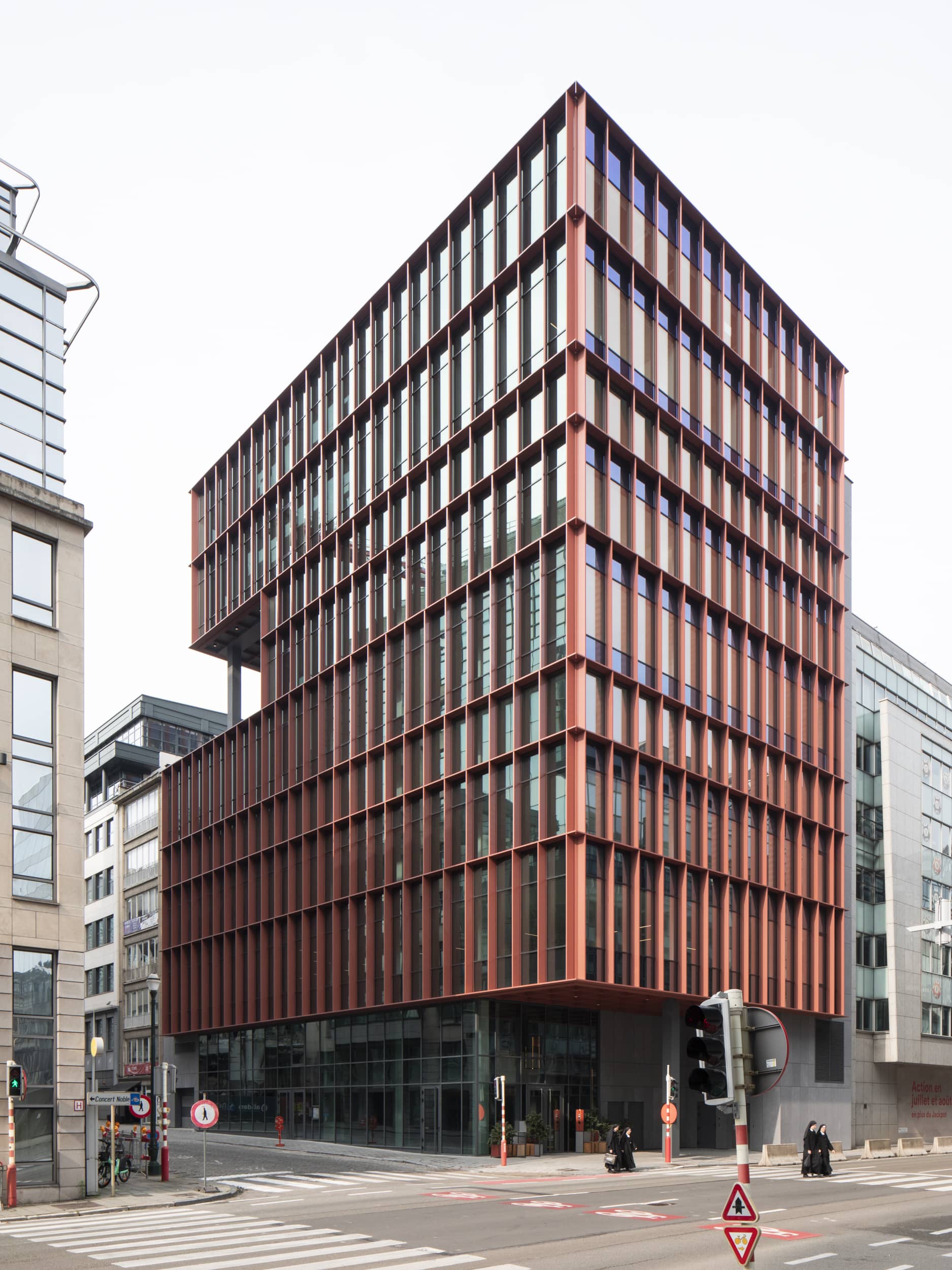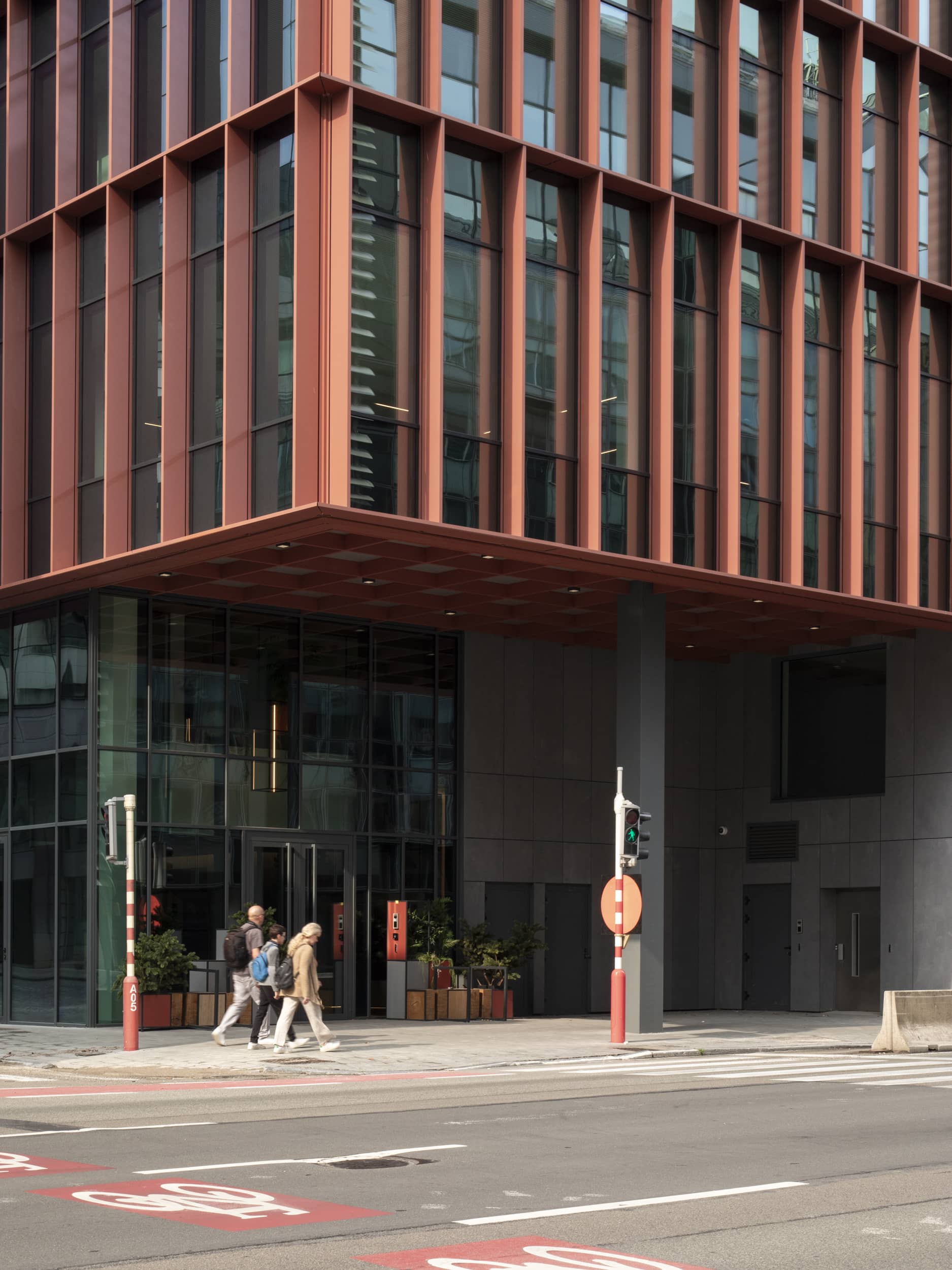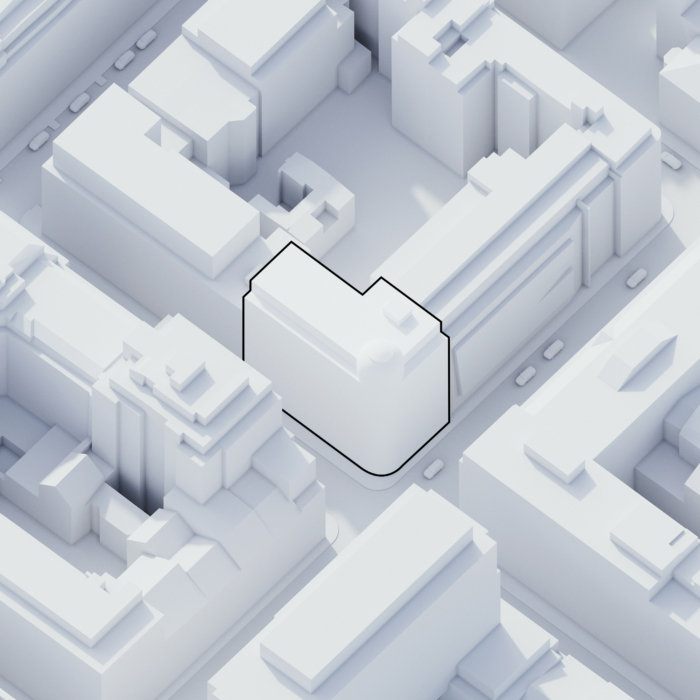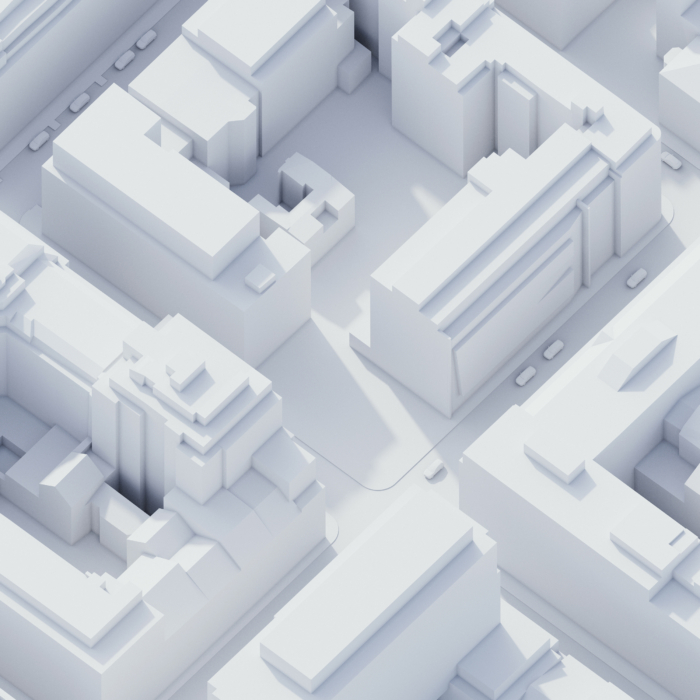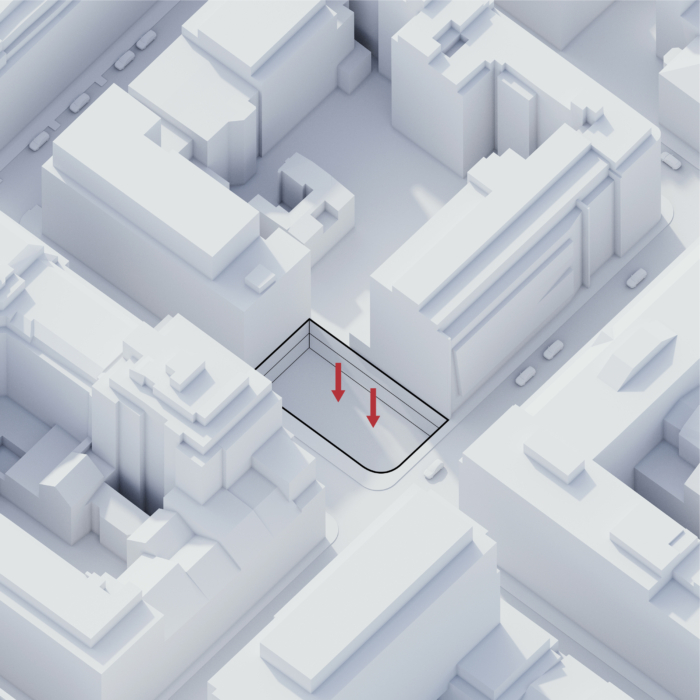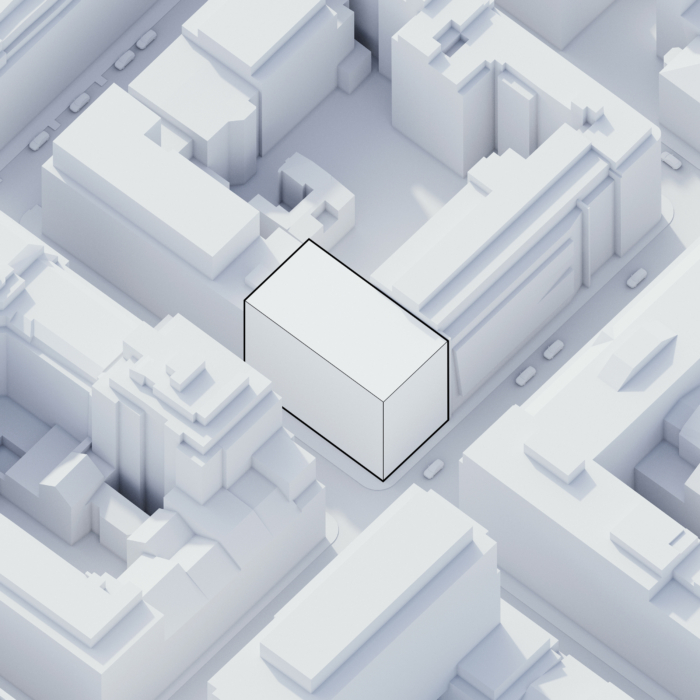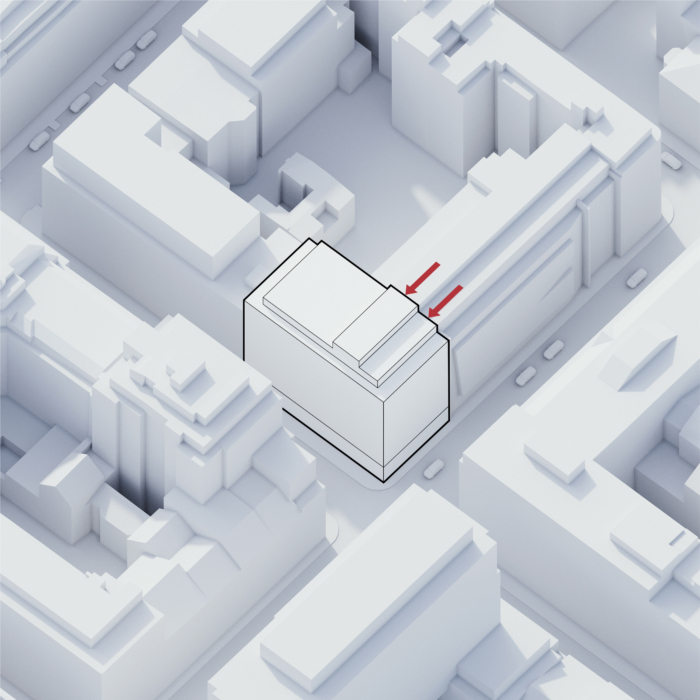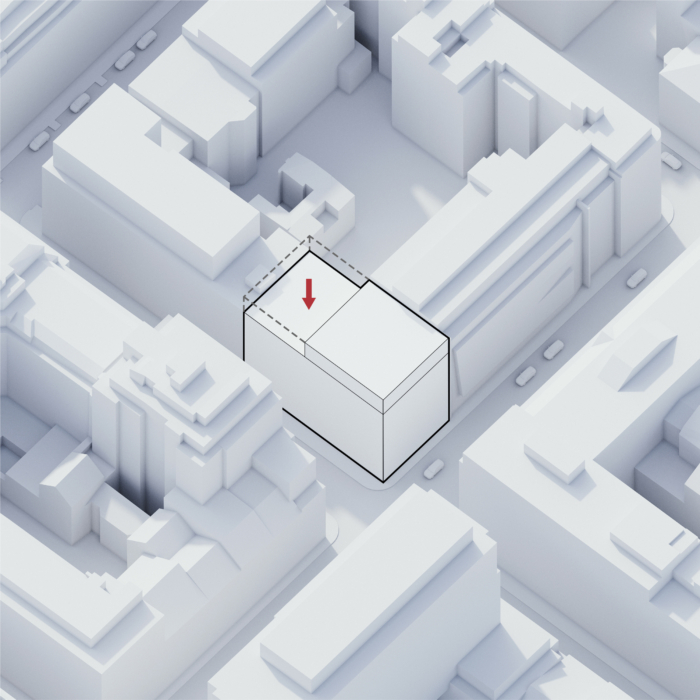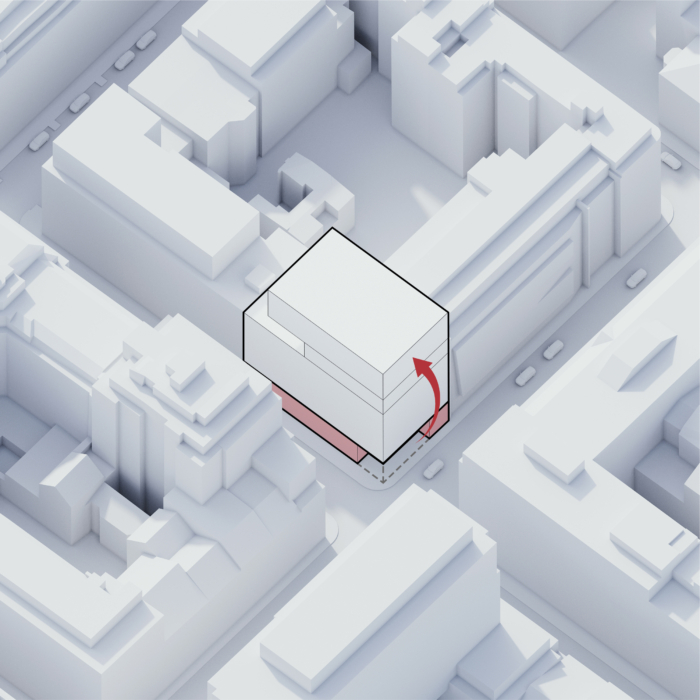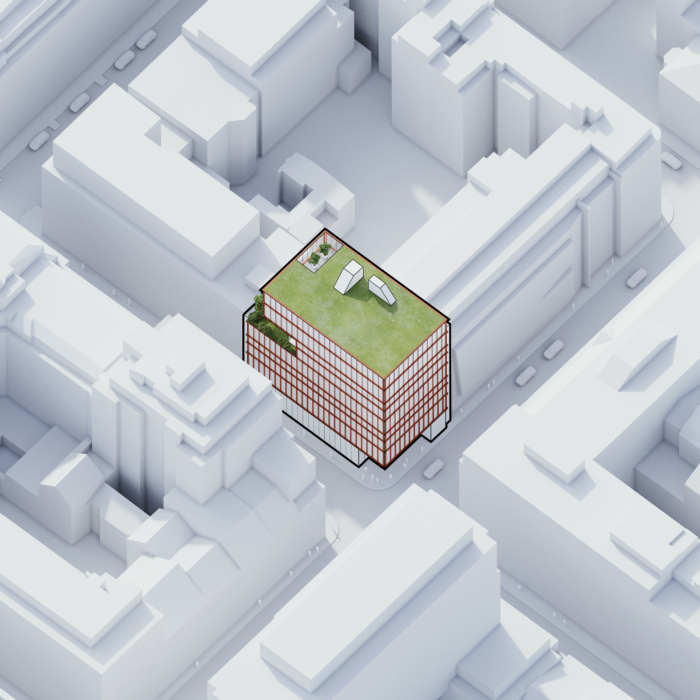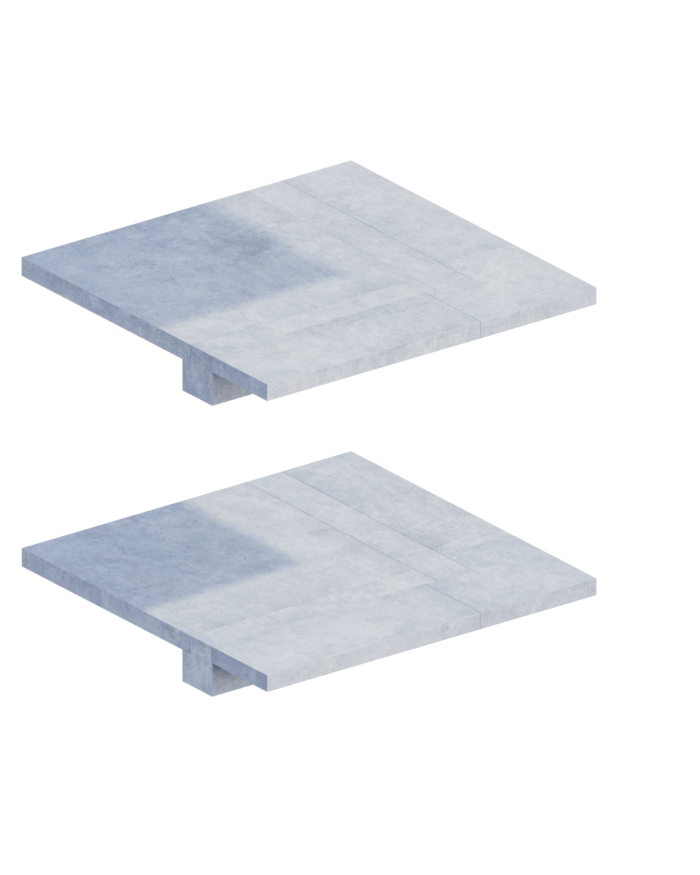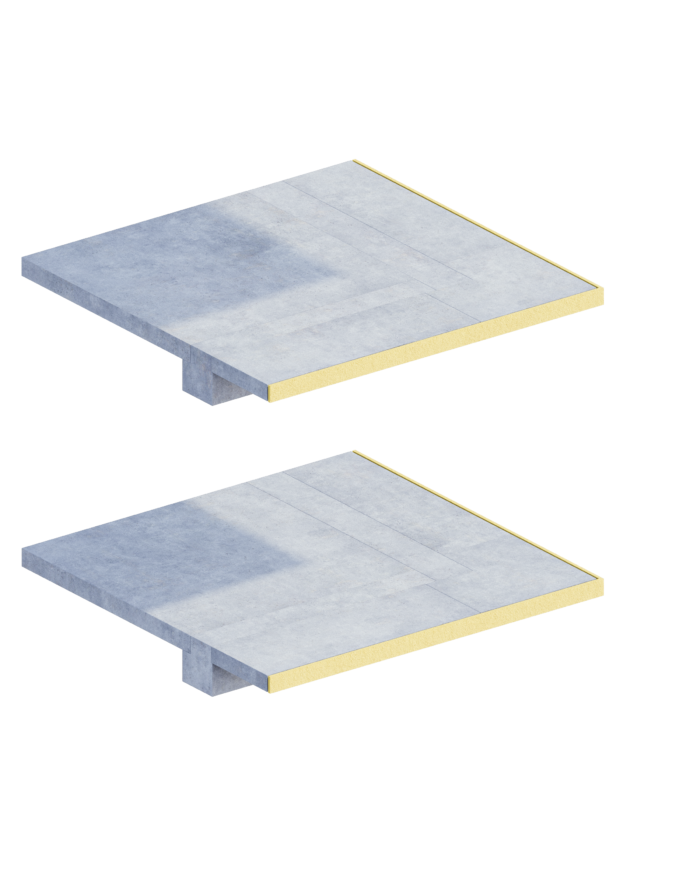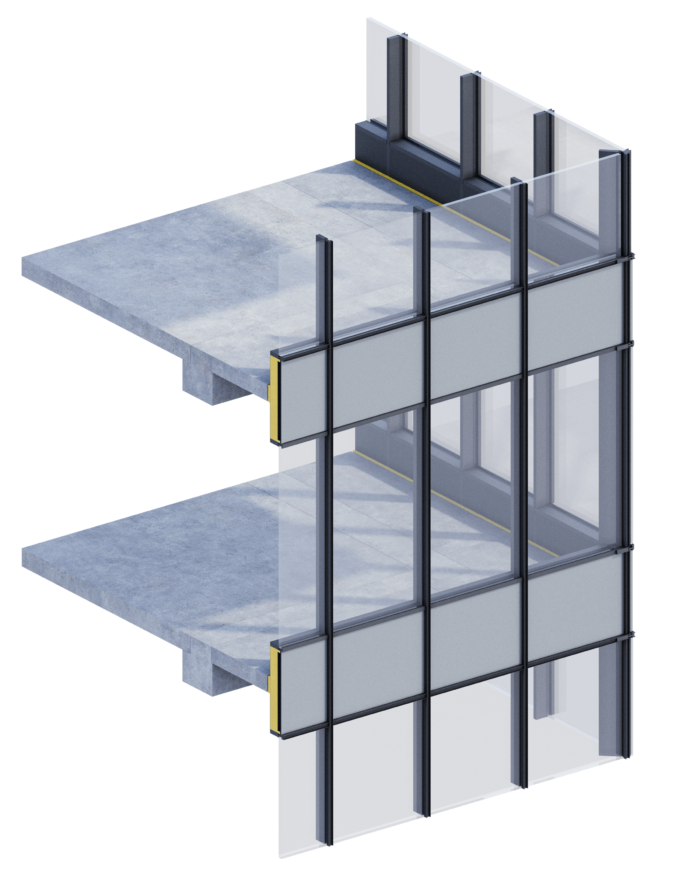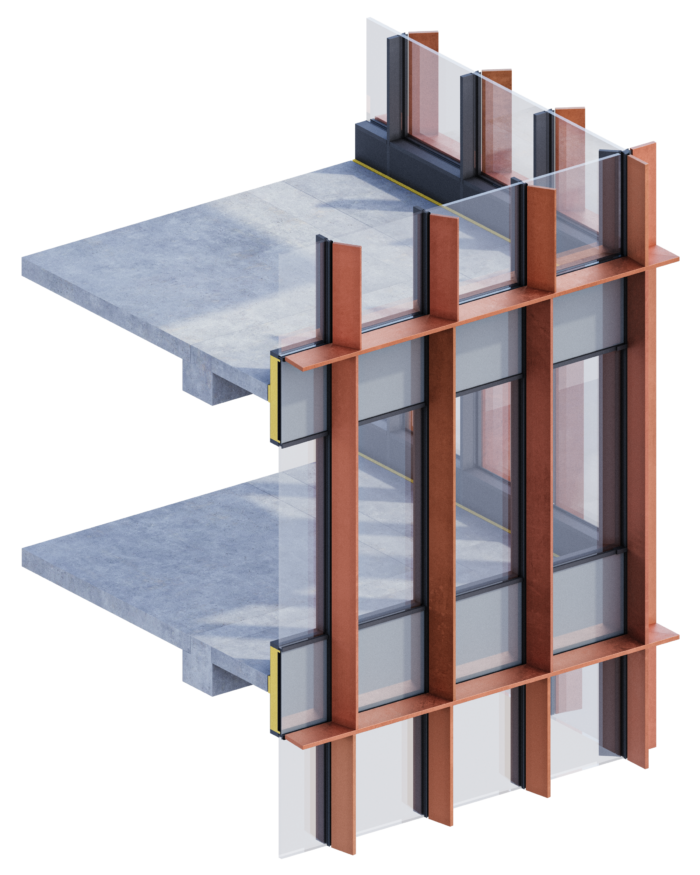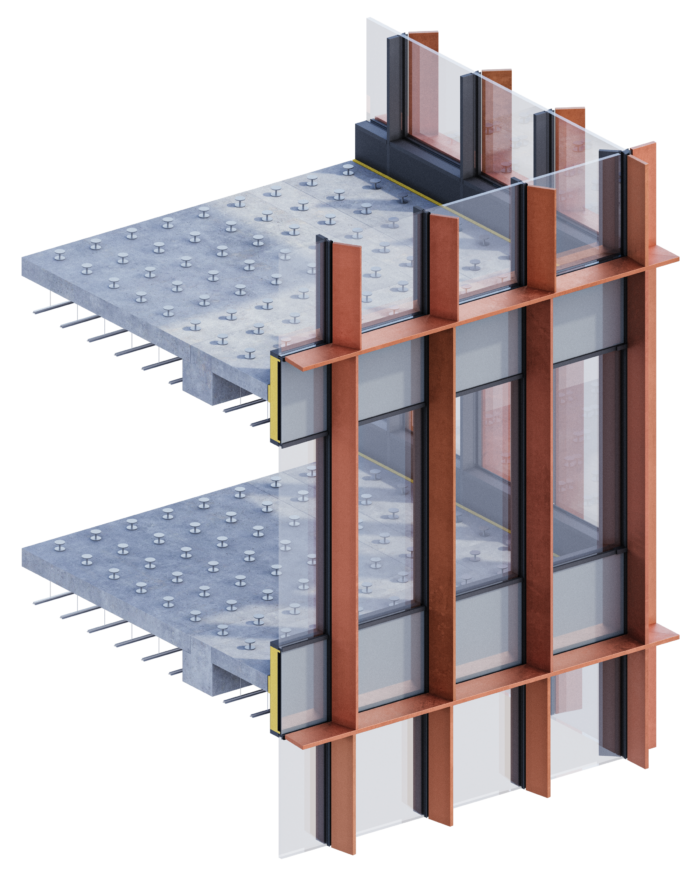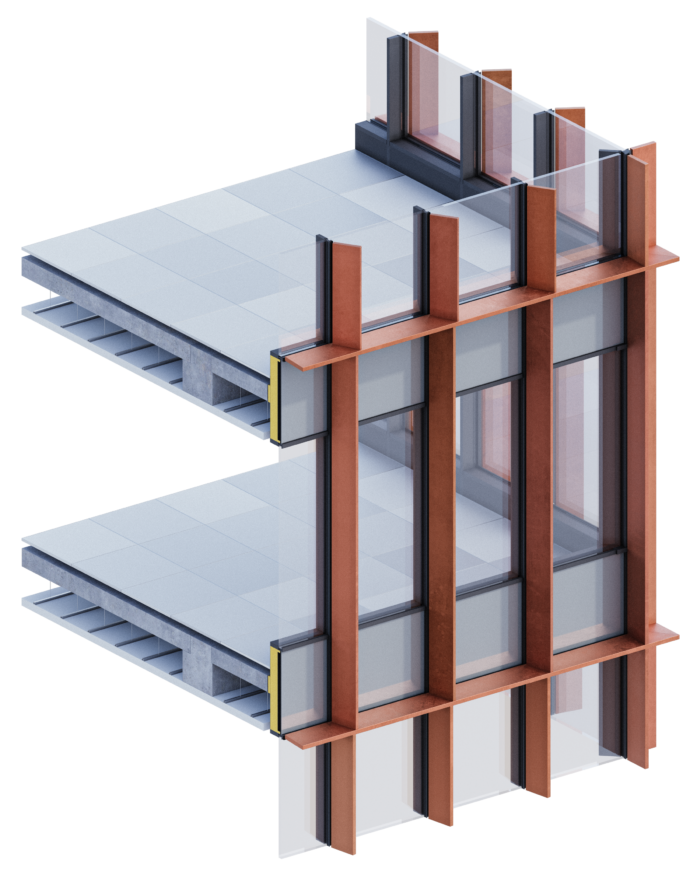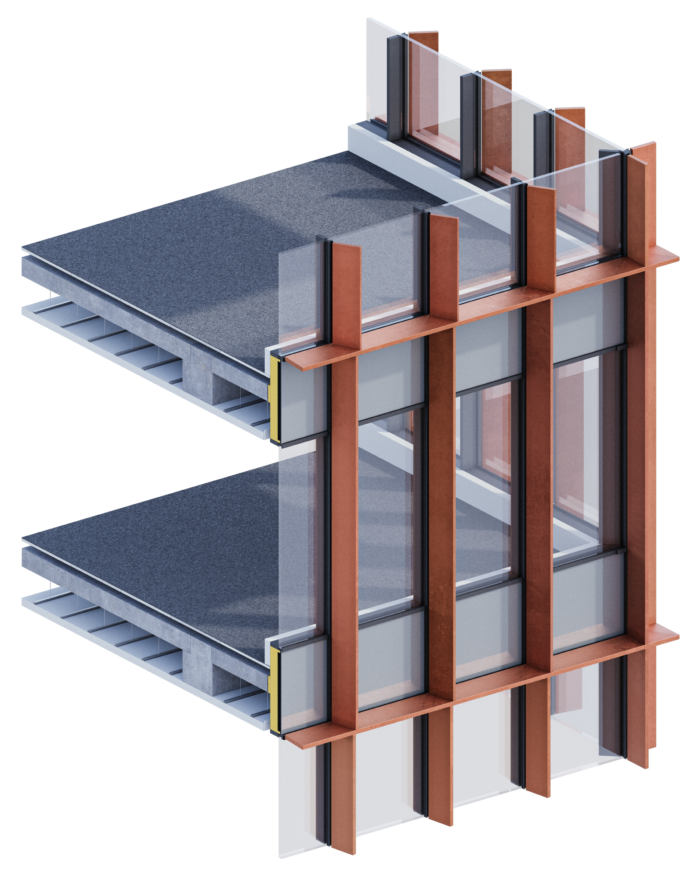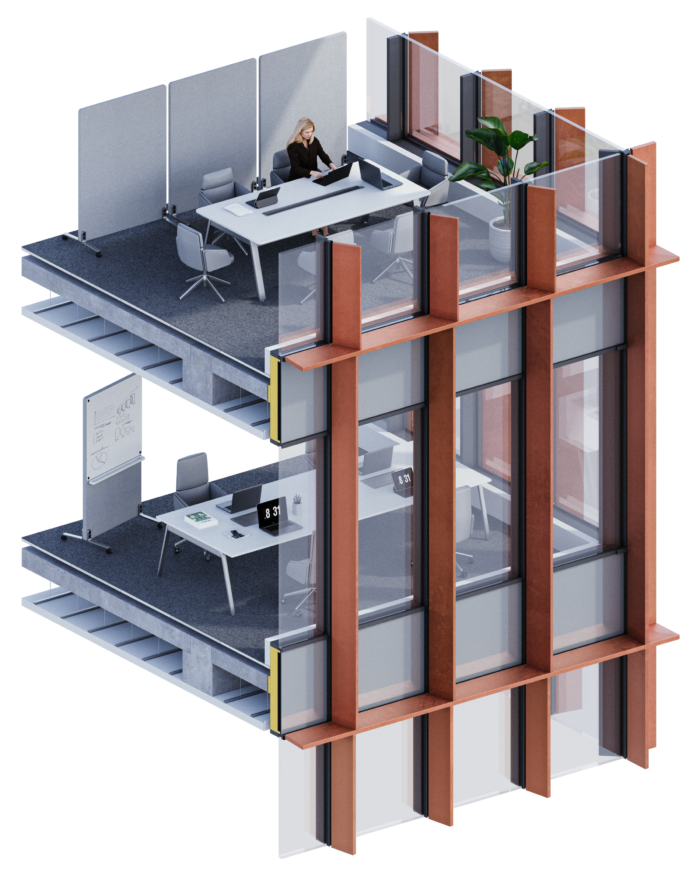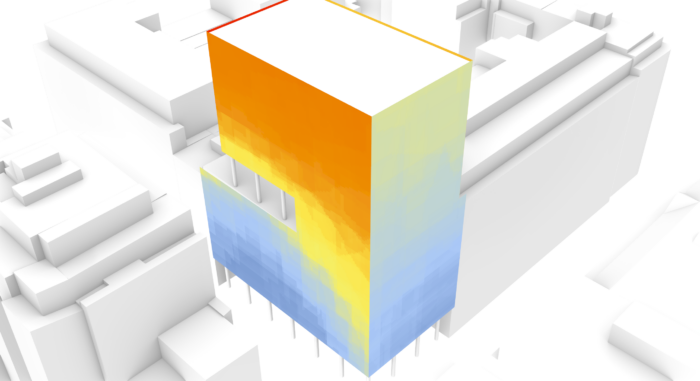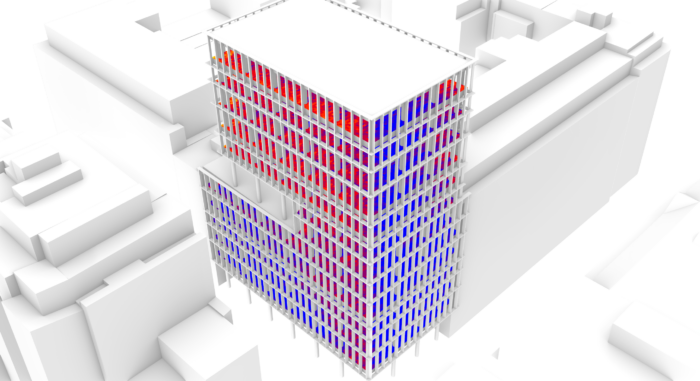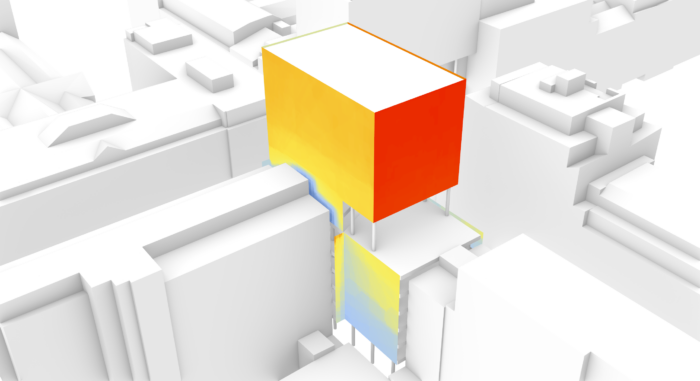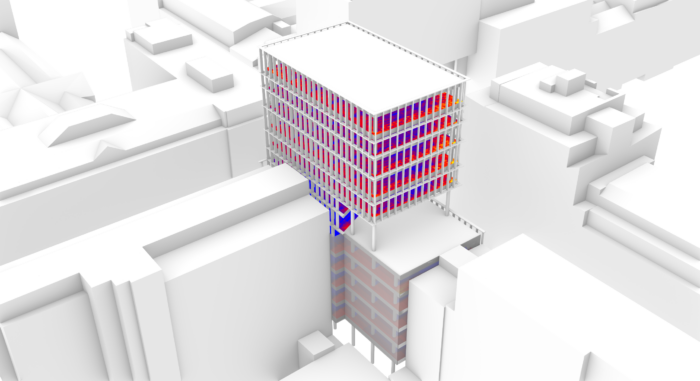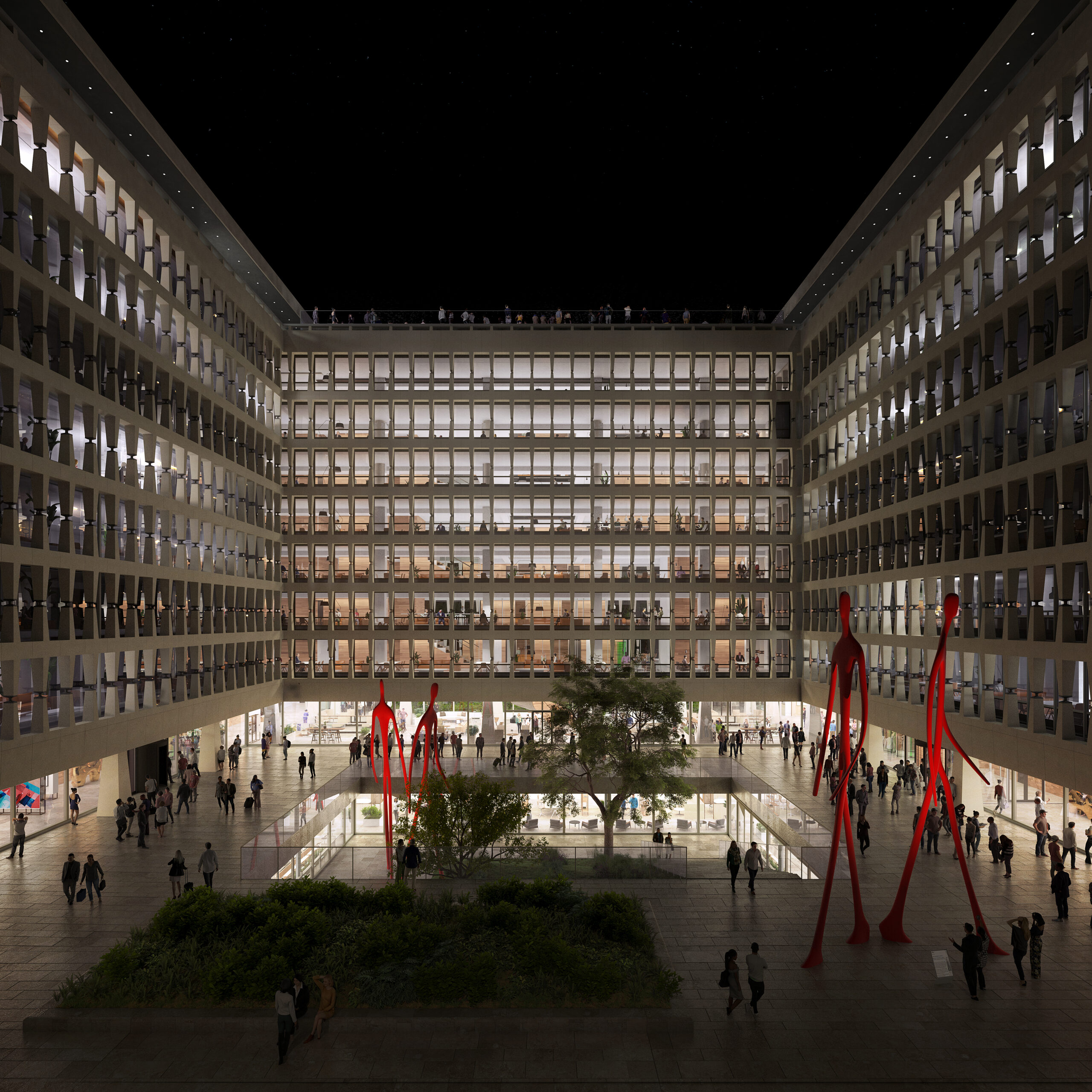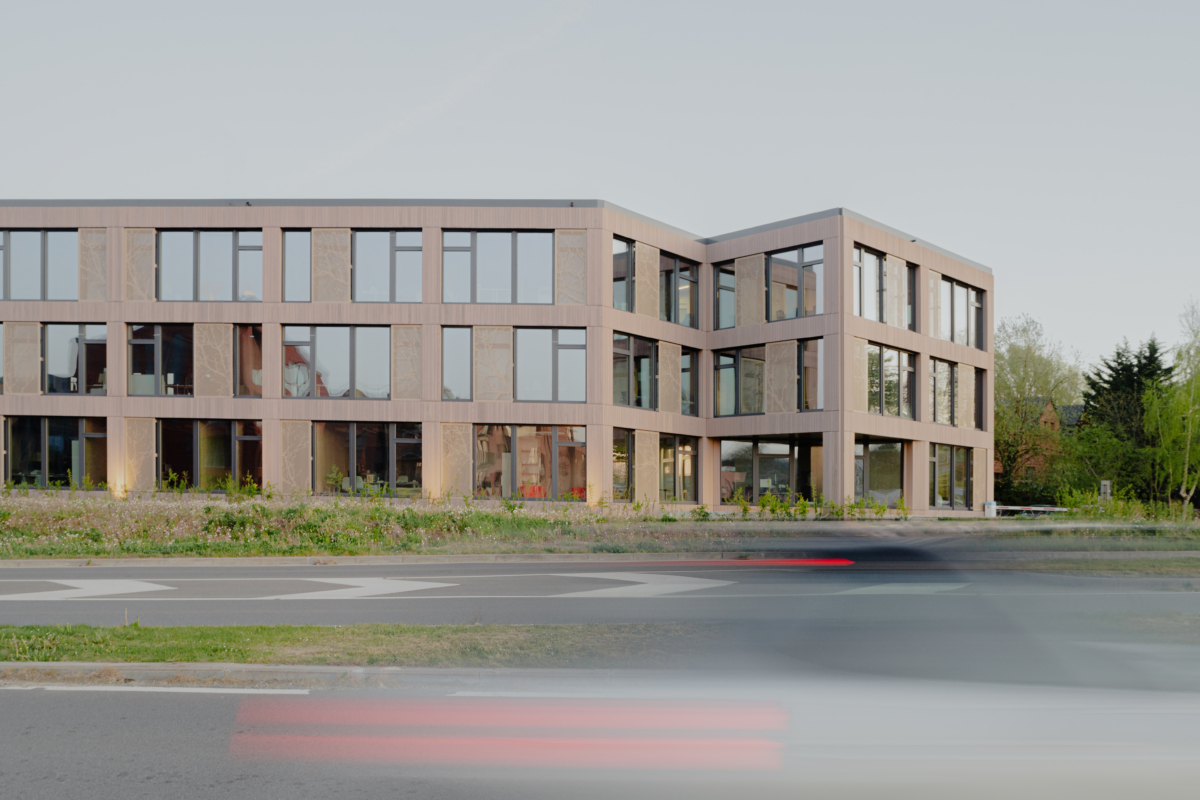We didn’t just replace a building, we rethought how it meets the city. The recessed base along Rue Belliard opens up space for pedestrians, where once the sidewalk barely reached 1.8 meters. A double-height plinth with transparent curtain walls hosts a horeca forum and a welcoming office lobby, connecting inside and outside life. Above, nine flexible office floors rise in a clear structural rhythm of 1.35 meters. A rooftop garden and stepped terraces create moments of green at height. The façade is articulated with copper-colored aluminum blades, 50 cm deep, parametrically designed to let in natural daylight while limiting solar gain. Their bronze hue adds a warm tactility to a district otherwise dominated by flat glass and grey stone. It’s not about decoration—it’s about orientation, performance, and clarity. Underground, technical spaces and bike parking complete a system designed for urban openness and long-term adaptability.
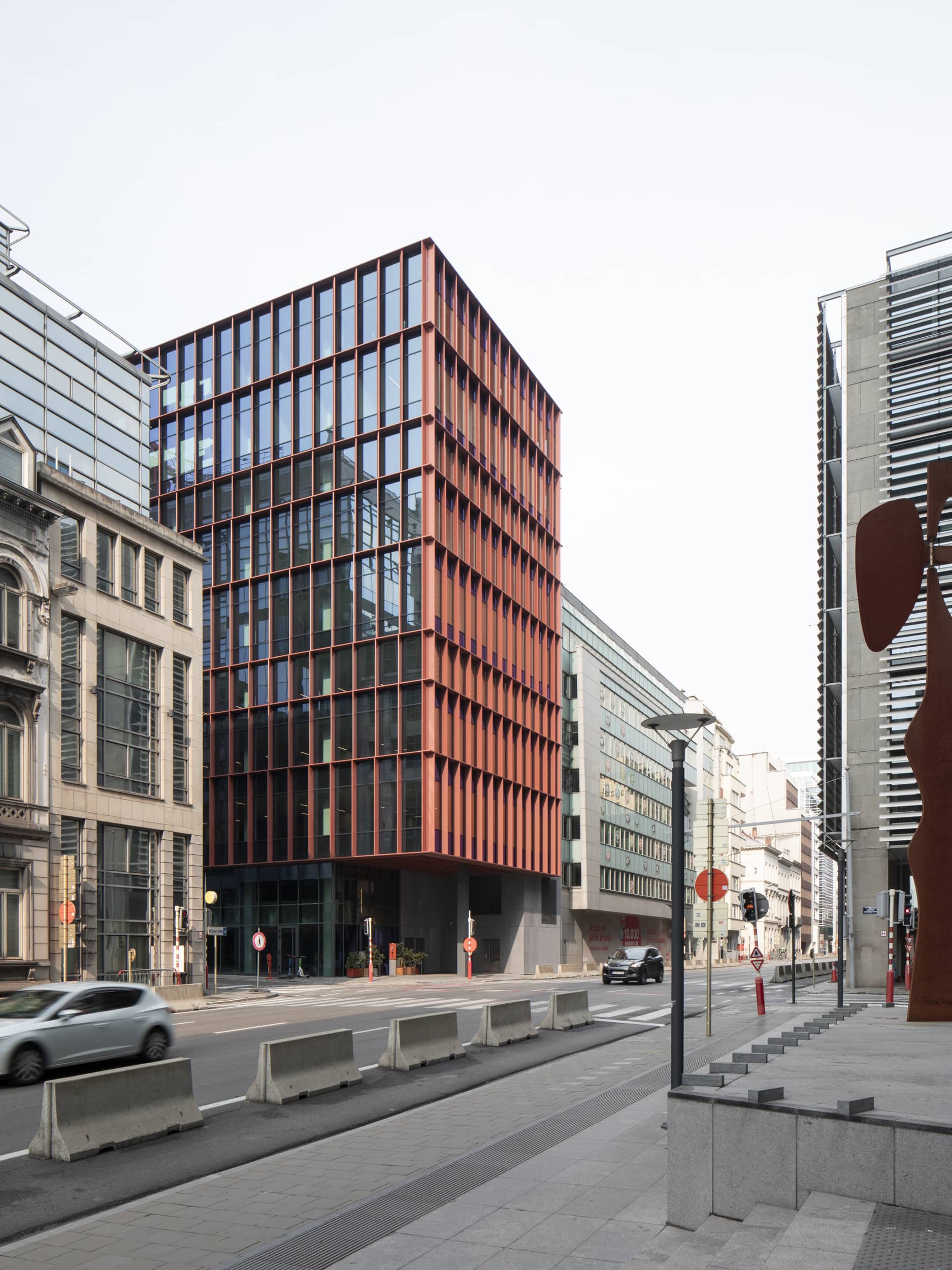
- 2020 - 2024
- DKV, MEAG
- Architecture, Interior Architecture, Climate Design
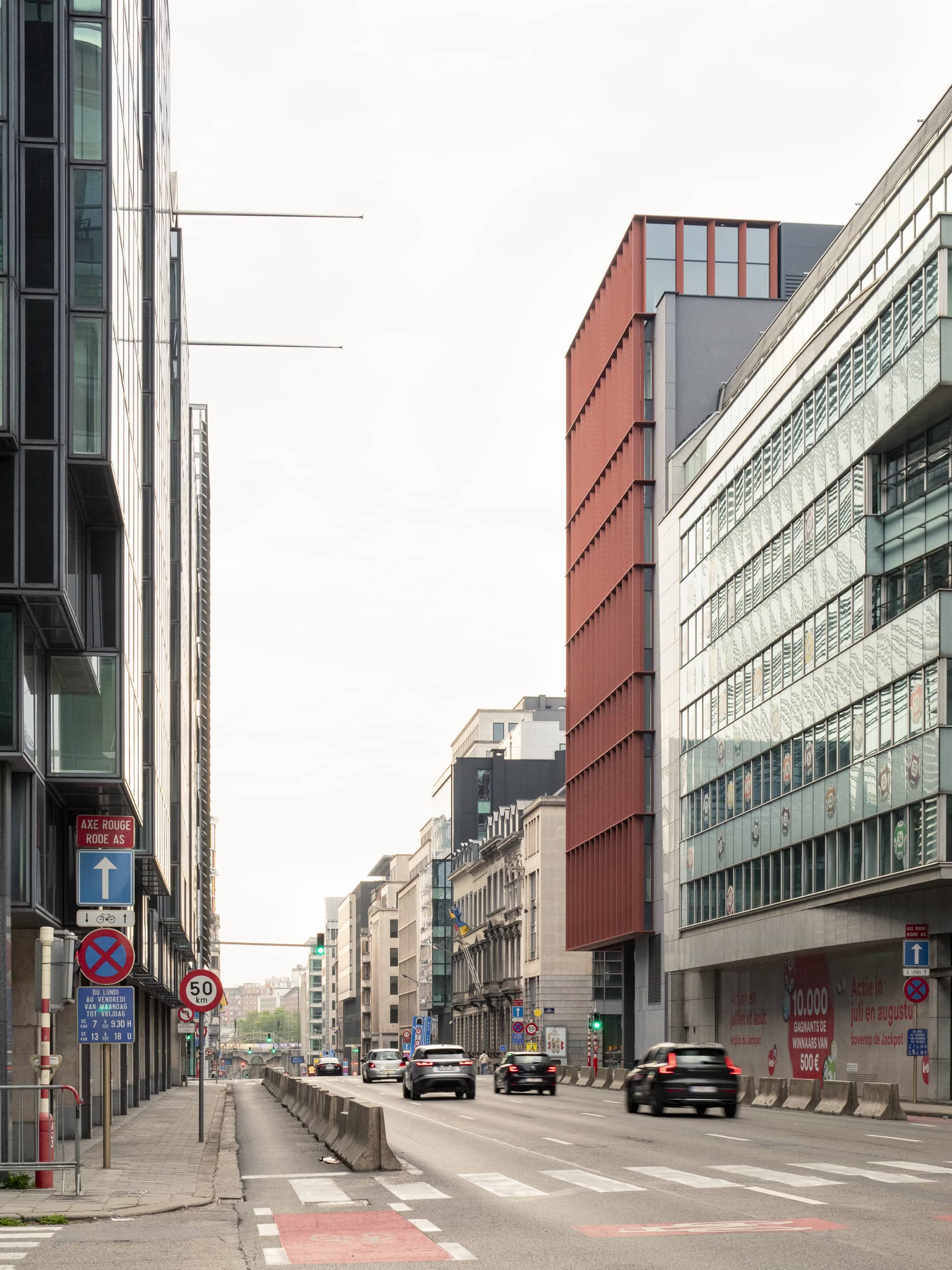
At the intersection of Rue Belliard and Rue de la Science, a narrow 653 m² corner plot housed a 1950s office building in monumental style, later altered in the 1980s and 1990s but spatially outdated. The structure lacked accessibility, offered limited flexibility due to its central core and rigid grid, and contributed little to street life. With less than 1.8 meters of sidewalk space and tunnel-bound traffic dominating the surroundings, the site reflected a district shaped by infrastructure rather than interaction. As policies shift toward reducing car use and restoring urban space to pedestrians, the question emerged: could this neglected corner become a catalyst for urban generosity, and spark a new dynamic within the European Quarter?
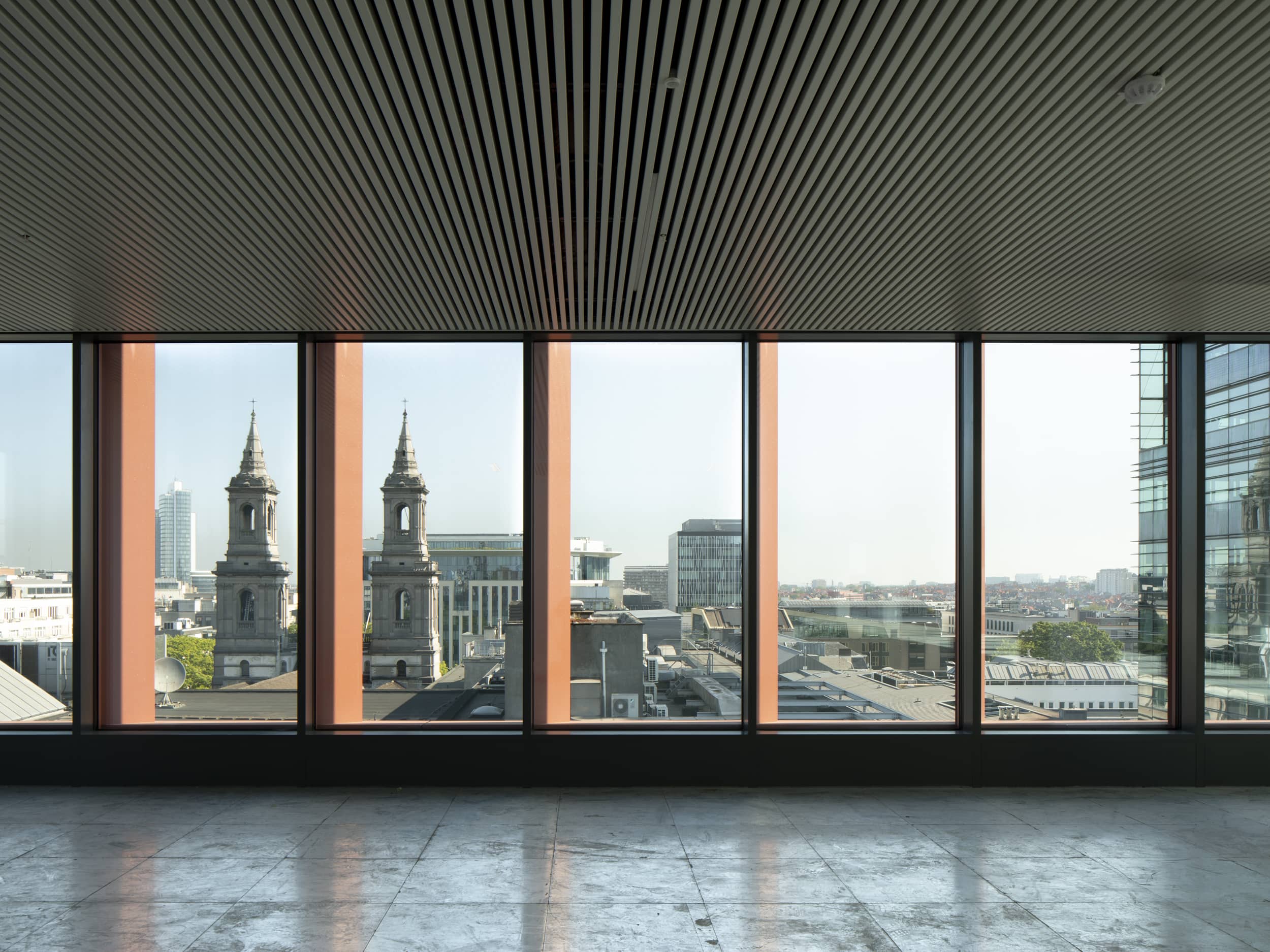
A mindset shift.
Science 12 aims to shift the logic of the district. On a constrained plot shaped by traffic infrastructure and fragmented façades, the project introduces clarity, permeability, and spatial relief. The double-height base seeks to reclaim public space and activate the street edge, while planted terraces and rooftop gardens aim to support biodiversity and moderate the microclimate in a dense urban fabric. The building’s logic remains legible: a structural grid that enables long-term adaptability, and a parametric façade that mediates between solar control and daylight access. While strong energy performance is secured through Passive House standards and BREEAM Excellent certification, the project also engages with regeneration through material reuse—raised floor panels have been reclaimed from other office buildings, reducing environmental impact and reinforcing a circular approach. Rather than mimic the surrounding glass architecture, Science 12 aspires to offer a more composed, textured presence: precise, contextual, and quietly assertive.
An interactive visual window into our planet's
changing climate, based on the most recent
measurements and climate model predictions
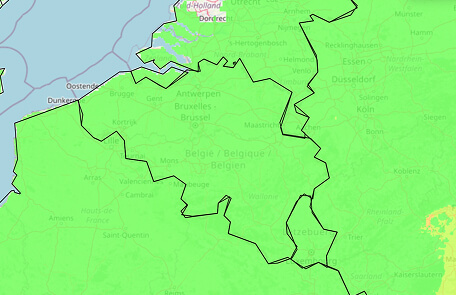
Brussels’ climate is warm and temperate. Rainfall in Brussels is fairly consistent throughout the year, with precipitation even in the driest months. According to the Köppen and Geiger classification system, this location is designated as Cfb, typical of oceanic climates. The average annual temperature recorded in Brussels is approximately 10.5 °C, while total annual precipitation reaches around 850 mm.
| Location | Brussels, BEL |
| Status | Built |
| Procedure | Competition, 1st Prize |
| Size | 5,556 m² |
| Collaboration | Julie Lambion, Crea-tec, DUSS |
| Certifications | BREEAM Excellent |
| Photographer | Maxime Vermeulen |
The architectural strategy was to let constraints guide precision and purpose. Orientation, natural light and programmatic layering informed every design decision, from the recessed base to the structural cadence. Sustainability was not treated as an afterthought but embedded in the project’s very DNA, through the logic of the façade, the spatial organisation and the reuse of materials. The solar context played a crucial role in shaping the envelope: the street-facing façade, oriented northeast, receives little direct sunlight, while the inner courtyard side, oriented southwest, benefits from significant solar exposure. As a result, the Daylight Autonomy of interior spaces would naturally remain low, requiring artificial lighting to compensate. To address this, a parametric script was developed to generate a layout of vertical fins, each individually oriented to optimise interior daylight. This adaptive system improves overall Daylight Autonomy by approximately 5 to 10%, demonstrating a façade quite literally shaped by natural light. The result is not a singular gesture but a system that responds to context, evolves with use and redefines how even the most constrained urban corner can be reimagined.
